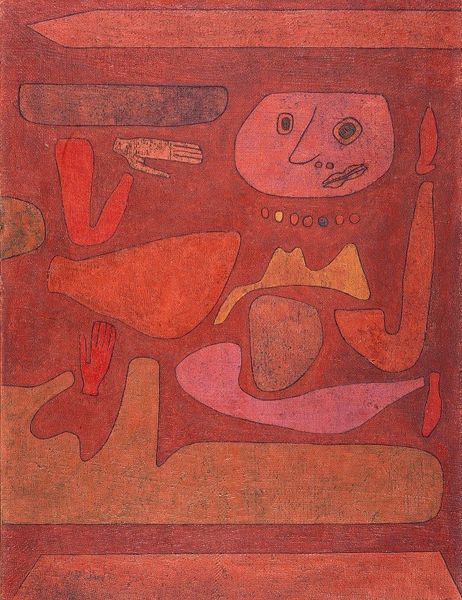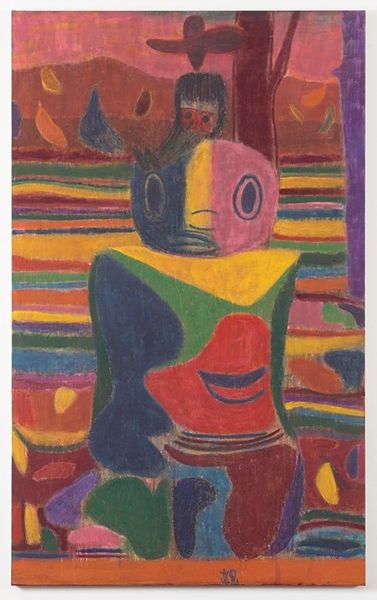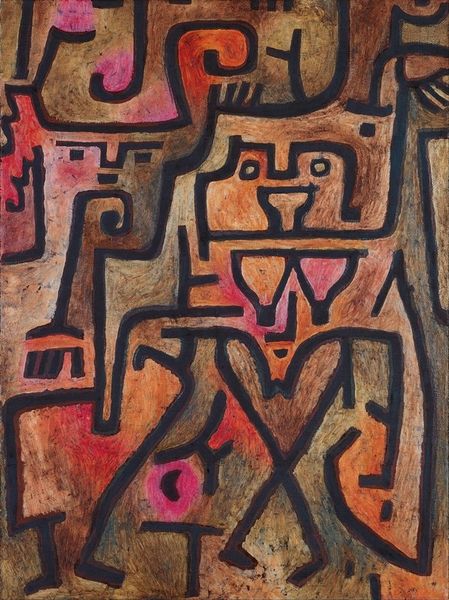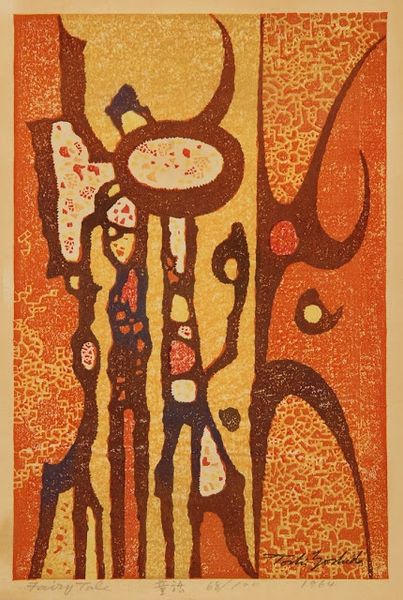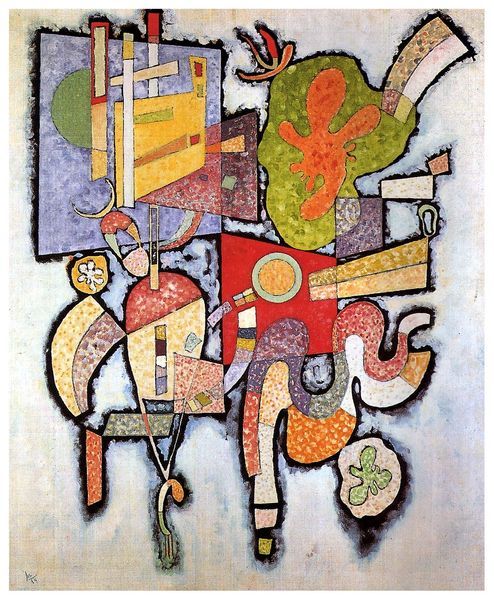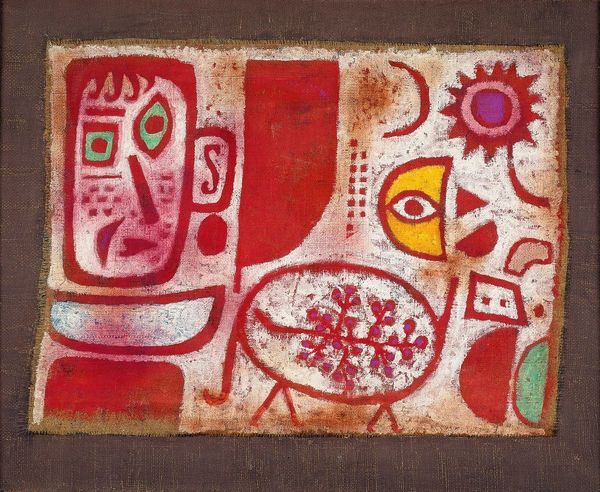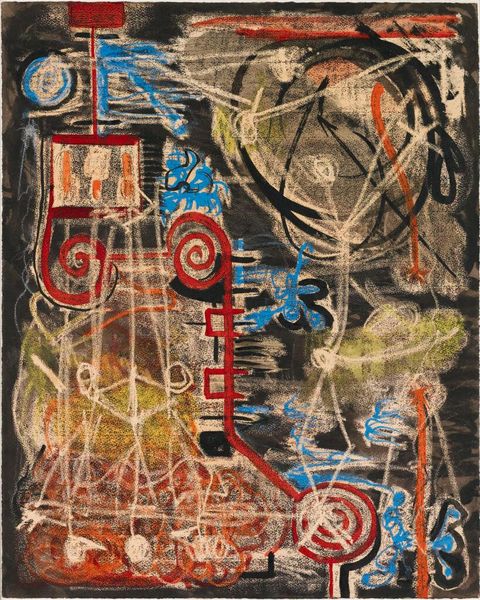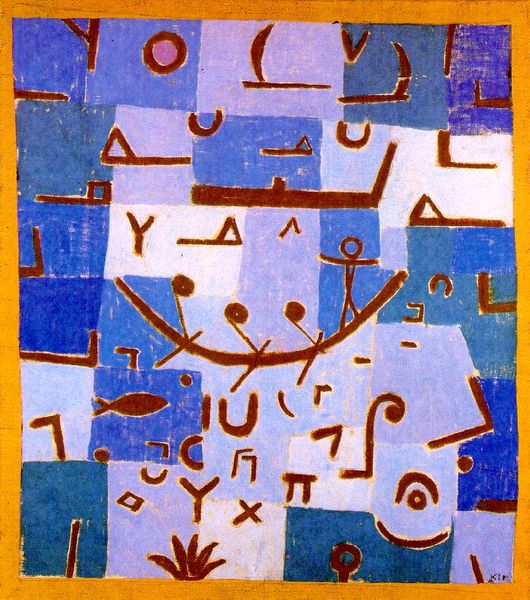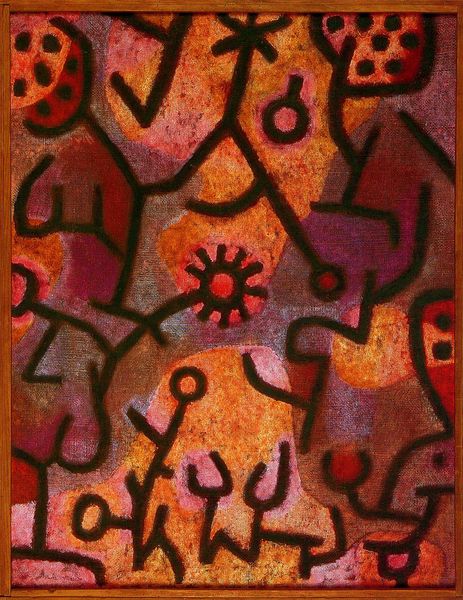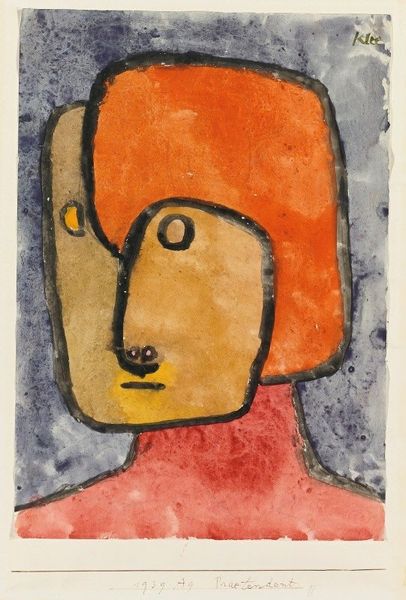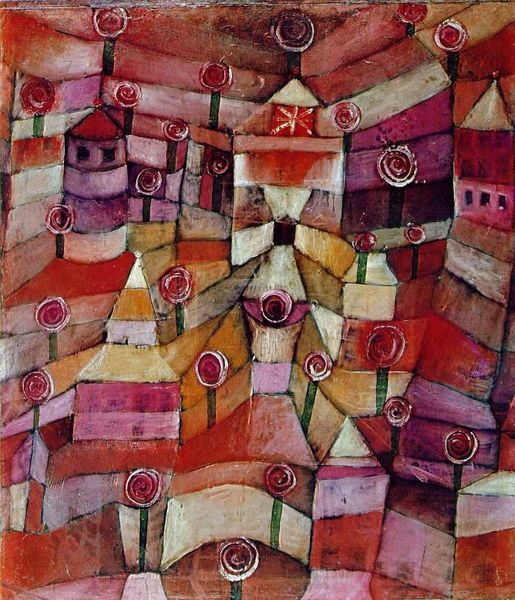
#
abstract painting
#
flower
#
handmade artwork painting
#
tile art
#
fluid art
#
acrylic on canvas
#
plant
#
naive art
#
painting painterly
#
painting art
#
watercolour illustration
#
watercolor
Copyright: Public domain
Curator: Looking at "Flowers in Stone" from 1939 by Paul Klee, I can’t help but feel a strange sort of grounded joy emanating from it. It’s in the Galerie Rosengart collection, and quite a powerful piece when viewed in person. Editor: Yes, “grounded” is right! The ochre and earth tones give it a sturdy feeling, despite the whimsy of the… flowers? Or are they coded messages? And what’s up with those brick-like structures at the bottom, giving it a wobbly kind of footing! Curator: Perhaps Klee wanted to give us a sense of weightiness. The geometric and letter-like symbols almost fossilize them, setting off their natural fluidity. And consider that this was painted on burlap, of all things! A really coarse texture. Editor: Burlap… intriguing. He's elevating a very common, rough material into something precious. Almost alchemic. But why burlap in '39? Was he playing with ideas of labor, of craft versus high art in a Europe heading for chaos? Curator: That's a compelling point! Perhaps it was his attempt at democratizing art, bringing a sort of earthiness that connected viewers more intimately to the work, something… unpretentious? But speaking of democratizing – look at those childlike shapes floating within the floral “head.” Do they represent humanity somehow? Editor: Interesting… though for me, those primal shapes and marks undermine any idea of an innocent, childlike aesthetic. They look… coded, almost aggressive in their simplicity. What processes, what labor was concealed to bring this work forth! I’m also trying to work out why he made the frame so integrated with the piece – it isn't the limit, it continues the art. Curator: Yes, Klee consistently defies boundaries, doesn't he? He beckons us to find the beauty in simplicity and the subtle layers that create depth. It's quite thought-provoking. Editor: Indeed. By decentering "high" material, Klee challenges us to find meaning and value where we least expect it: the overlooked, the common. In its way, it allows art to speak of precarity and resilience during that unsettling time.
Comments
No comments
Be the first to comment and join the conversation on the ultimate creative platform.
